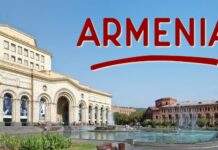The two-nation theory Negotiations over partition is an important topic about the establishment of Pakistan. The two-nation theory was an establishing rule of the Pakistan Movement (for example the belief system of Pakistan as a Muslim country state in South Asia), and the segment of India in 1947. … Significantly after the arrangement of Pakistan, banters on whether Muslims and Hindus are unmistakable nationalities or not proceeded in India.
Another conceptual framework for the creation of a separate Muslim state came from Cambridge. On January 28, 1933, Chaudhary Rahmat Ali, a student at Cambridge, published a pamphlet entitled Now or Never: Are We to Live or Perish for Ever? drafted by him and supported by three others. It stated that India was neither a country nor a nation. The federal form of Government would bring an end to Islam in India and that the Muslims should demand the creation of a separate sovereign Muslim state to be called PAKISTAN, which meant the five northern units of India viz. Punjab, North West Frontier Province (Afghan Province), Kashmir, Sind and Baluchistan. It read:
India, constituted as it is at the present moment, is not the name of one single country; nor the home of one single nation. It is, in fact, the designation of a State created by the British for the first time in history. It includes peoples who have never previously formed part of the Indian Nation at any period of its history, but who have, from the dawn of history till the advent of the British, possessed and retained distinct nationalities of their own. In the five Northern Provinces of India out of a total population of forty million, we the Muslims constitute thirty million. Our religion and culture, our history and tradition, our social code and economic system, our laws of inheritance, succession and marriage are fundamentally different from those of most people living in the rest of India.
The ideals which move our people to make the highest sacrifices are essentially different from those which inspire the Hindus to do the same. These differences are not confined to broad basic principles far from it, they extend to the minutest details of our lives. We do not inter-dine, we do not inter-marry. Our national
customs and calendars, even our diet and dress are different.
The events during the period 1937-39 proved beyond doubt that the political domination of the Hindus would be detrimental to the cause of the Muslims. Under the Act of 1935. elections to the Provincial Assemblies were held in the winter of 1936-37. During the election campaign Jawahar Lal Nehru claimed that there were only two parties in the country – the Congress and the British, and demanded that others should “line up”. Quaid-i-Azam challenged Nehru’s assertion and said:
“I refuse to accept this proposition. I refuse to line up. There is a third party in the country and that is Muslim India.”
The Congress was able to form Government in eight out of eleven provinces. The Congress ministries remained in power from July 1937 to November 1939. During their tenure in office the Congress Government followed policies which created apprehensions among the Muslims regarding their future. Congress attitude was arrogant and humiliating for the Muslims. Their policies aimed at the establishment of Ram Raj in the garb of “Indian nationalism”. They devised and manipulated economic measures as to hit the interests of the Muslims.
Muslims were discriminated in the courts. Their religious sentiments were injured by playing music before the mosques, stopping slaughtering of cow by force and sometime even stopping Azan. But worst was the education policy. Its objective was to impose Hindu ideas and by subtle methods to prepare a generation which would cease to be Muslim in thought, character and action. A scheme of primary education, commonly known as Wardha scheme, was introduced. It was geared to merge the Muslims in Hindu Nationalism. The text books glorified Hinduism at the expense of Islam. They impressed on the mind of the Muslim child the inferiority of the Muslim culture and superiority of Hindu traditions and beliefs. In schoolsalmost a religious reverence was shown to Gandhi.
Respect for the Congress flag and chanting of Vanda Mat ram, which was adopted by the Congress as “national song”, was made obligatory for the students. The proceedings of the legislative assemblies of the Congress-governed provinces were opened with the recitation of the “national song”, which depicted Muslims as unclean and aggressive foreigners. Its contents were anti-Islamic and idolatrous. The students were asked to dress and salute in the Hindu traditions. Attempts were made to introduce Hindi at the cost of Urdu, a language which had originated and developed as a distinct feature of Muslim culture in South Asia. It may be reminded that in 1867 it was Hindi – Urdu controversy which brought to surface for the first time, during the British period, the latent cultural differences between the two communities. It was the attitude of the Hindus towards Urdu which convinced Sir Syed Ahmad Khan that “the two communities would never be able to join in anything whole heartedly, ” and sowed the seed of Muslim Nationalism.
Under the Congress rule the Muslims were subjected to high handedness.48 Quaid-i-Azam charged that the Congress wanted to establish a totalitarian, Fascist Hindu Raj in India. 49 When the Congress ministries resigned the Muslim League celebrated December 22. 1939 as “Deliverance Day”.
During this period Quaid-i-Azam emerged as the most important leader of the Muslims and the Muslim League as their main spokesman. Disillusioned by the Congress rule the Muslims gave serious thought to the idea of a separate homeland for themselves. The Muslim League in its Twenty-fifth Session held at Lucknow (October 15-17, 1937) changed its creed to “full independence”. It passed a resolution which read:
The object of the All India Muslim League shall be the establishment in India of full independence in the form of a federation of free democratic States in which the rights of the Musalmans and other minorities are adequately and effectively safeguarded in the Constitution. In October 1938, Sind Provincial Muslim League in its conference held at Karachi, under the president ships of Quaid-e-Azam, tabled a resolution in the Subjects Committee which interalia suggested that “India may be divided into two federations, namely the federation of Muslim: States and the federation of non-Muslim States,” The Conference recommended to the All India Muslim League.
To devise a scheme of Constitution under which Muslim majority provinces. Muslim Indian States and areas inhabited by a majority of Muslims may attain full independence in the form of a federation of their own with permission to admit any other Muslim State beyond the Indian frontiers to join the Federation and with such safeguards for non-Muslim minorities as may be conceded to the Muslim minorities in the non-Muslim Federation of India.
To solve the Indian problem a number of proposals for the partition of the sub-continent were made during 1930s.53 The Working Committee of All India Muslim League in its meeting held at Meerut (March 26, 1939) decided to examine the various schemes. On February 4, 1940, the question of a separate homeland for the Muslims was considered in the meetings of the Working Committee and Council of All India Muslim League held in Delhi. It was decided to propose it officially at the open session of Muslim League to be held in March at Lahore.
On March 22, 1940 addressing the Twenty-seventh Session of the All India Muslim League, held at Lahore, Quaid-Azam reiterated that “Musalmans are a nation according to any definition of a nation,” and demanded that “they must have their homeland, their territory and their State”. He said: “We wish our people to develop to the fullest our spiritual, cultural, economic, social and political life in a way that we think best, and in consonance with our own ideals and according to the genius of our people.”

























